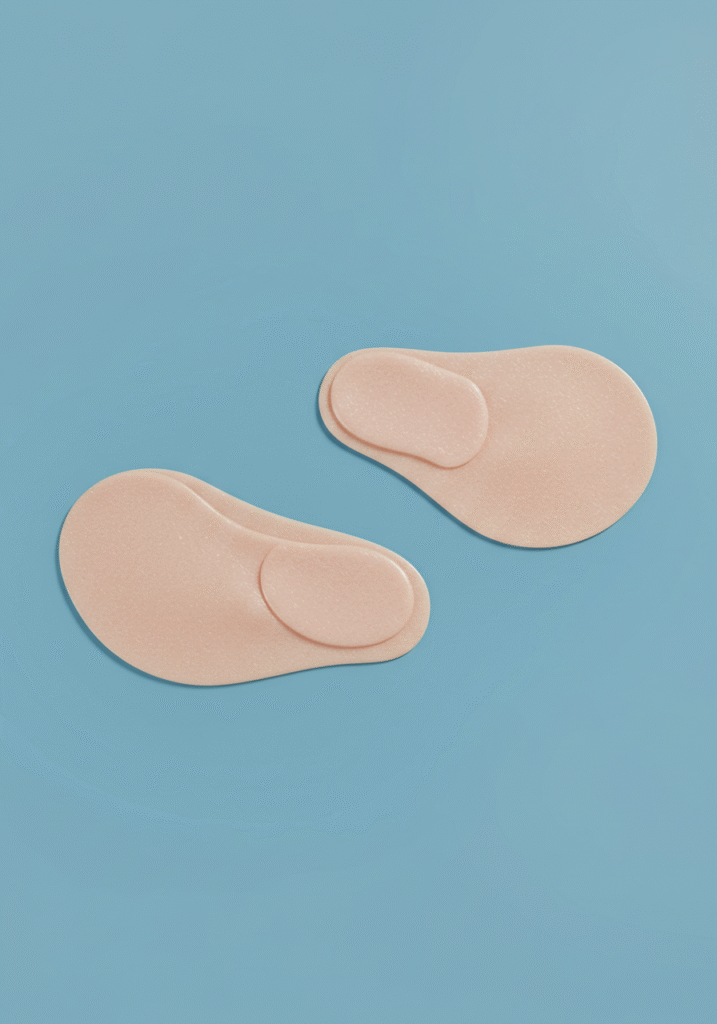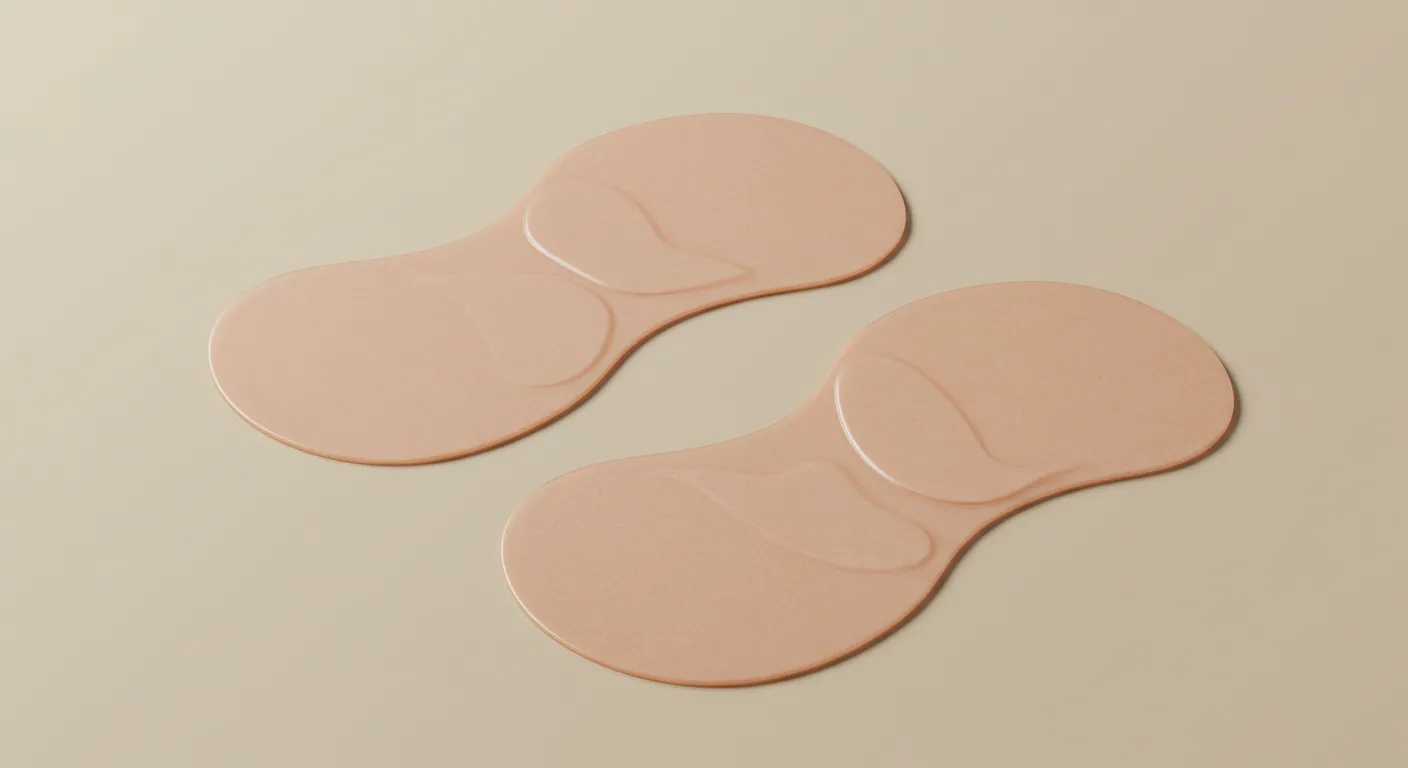Eye Patches Unveiled The Complete Guide to Brighter
Introduction
Eye patches have evolved from a novelty to a non-negotiable element in modern skincare routines. Once associated with pirates or post-surgery healing, today’s eye patches are luxurious, innovative skincare heroes, designed to target puffiness, dark circles, fine lines, and under-eye fatigue. With social media beauty influencers flaunting their morning routines and celebrities swearing by the under-eye miracle fix, the rise of eye patches is more than just a trend—it’s a skincare revolution.
From gold-infused hydrogel pads to caffeine-rich Korean formulations, eye patches are now backed by science and beauty insiders alike. Their easy application, instant results, and soothing benefits make them perfect for anyone seeking a quick pick-me-up or long-term rejuvenation. Whether you’re recovering from a sleepless night or prepping for a red carpet event, these small patches deliver big results.
Moreover, the modern consumer is far more educated and discerning—ingredients, brand ethics, and performance all matter. Today’s eye patches cater to clean beauty enthusiasts, busy professionals, and Gen Z shoppers alike. They’re portable, Instagram-worthy, and most importantly—effective. Let’s dive deep into what makes eye patches not only popular but indispensable in the skincare industry.

History of Eye Patches
The journey of eye patches began far from luxury skincare. Historically, eye patches were worn for medical purposes—most notably to aid healing after eye injuries or surgeries. They were also famously used by pirates, not as a fashion statement, but allegedly to keep one eye adapted to darkness when switching from the ship’s deck to below. In clinical environments, doctors used patches to treat conditions like amblyopia (lazy eye) in children, helping strengthen the weaker eye through occlusion therapy.
Fast forward to the early 2000s, the first wave of beauty-oriented eye patches appeared. Luxury beauty brands began launching gel-based versions, often infused with cooling agents or collagen, promising de-puffing effects. This was the birth of the beauty eye patch era.
The last decade witnessed a surge in skincare innovation, and eye patches transformed into high-tech solutions packed with ingredients like hyaluronic acid, peptides, niacinamide, and even snail mucin. The aesthetic appeal grew alongside performance. Brands like Peter Thomas Roth, Estée Lauder, and K-beauty pioneers revolutionized the market, offering patches in gold foil, crystal shimmer, and eye-catching packaging.
What was once a medical tool is now a beauty staple across the globe. Eye patches today symbolize self-care, luxury, and skincare intelligence—a far cry from their utilitarian beginnings.
How Eye Patches Work
Eye patches might look like a simple accessory, but the science behind their efficacy is fascinating. Typically made from hydrogel or bio-cellulose, these patches are designed to adhere gently under the eyes while delivering potent ingredients deep into the skin. The area around the eyes is one of the most delicate and thin-skinned parts of the face, making it highly susceptible to signs of fatigue and aging—and the perfect canvas for targeted treatments.
Hydrogel patches are especially popular because they create an occlusive barrier, which allows ingredients to penetrate more effectively. Once applied, the patch begins to infuse the skin with active compounds like:
- Hyaluronic Acid – deeply hydrates and plumps the skin.
- Caffeine – constricts blood vessels to reduce puffiness and dark circles.
- Peptides – promote collagen production for firmness and elasticity.
- Niacinamide – brightens and evens out skin tone.
- Vitamin C & E – offer antioxidant protection and skin nourishment.
Many patches also have a cooling effect, which soothes tired eyes and instantly refreshes the appearance. The physical weight and cooling sensation reduce swelling by encouraging lymphatic drainage.
Application is usually recommended for 10–20 minutes, making it an ideal beauty ritual for mornings, pre-makeup prep, or evening relaxation. Some users even store their patches in the fridge for an extra cooling boost.
Beyond the feel-good factor, consistent use of eye patches has shown visible improvements in skin texture, reduced crow’s feet, and minimized dark circles over time. The science is clear: when used properly, eye patches are not just indulgent—they’re an effective skincare ally.

Different Types of Eye Patches
Eye patches have evolved significantly over the years. From strictly medical devices to premium skincare accessories, today’s market offers a broad spectrum to cater to various needs. Understanding the different types of eye patches is essential if you want to make an informed decision and choose the right patch for your concern—whether it’s healing a lazy eye, reducing dark circles, or simply pampering your skin.
Medical Eye Patches
Medical-grade eye patches are designed for therapeutic use. These are commonly used for conditions such as amblyopia (lazy eye), eye injuries, or post-surgery healing. Typically made from soft fabric or breathable material, they come in adhesive and non-adhesive forms. The adhesive kind is usually used for children and sticks directly to the skin, while the non-adhesive variants come with elastic straps and are reusable. These serve a critical health purpose and are often prescribed by ophthalmologists.
Hydrogel Eye Patches
Among the most popular in the beauty industry, hydrogel eye patches are known for their cooling, soothing, and moisturizing effects. These are infused with beneficial ingredients like hyaluronic acid, green tea, retinol, peptides, and even 24K gold. Hydrogel patches adhere gently to the skin and are left on for 15–30 minutes to allow the serum to penetrate deep into the under-eye area. They’re ideal for people dealing with puffiness, fine lines, or tired-looking eyes.
Cloth and Fabric Eye Masks
These reusable patches or masks are often made from materials like cotton, microfiber, or silk. Some are designed to be microwaved for a warm compress, while others can be chilled in the fridge to reduce inflammation. These masks are less concentrated than hydrogel patches but provide comfort and relaxation—ideal for daily use or travel.
Luxury and Tech-Enhanced Eye Patches
In the high-end beauty market, you’ll find eye patches that combine advanced skincare science with a touch of opulence. These might include LED-light therapy masks, vibration technology for product absorption, or patches containing rare botanical extracts and luxury materials. They may also be part of full skincare rituals and come with complementary products like serums and eye creams.
From basic functionality to indulgent skincare rituals, eye patches are not just a temporary fix—they’re a lifestyle product now, designed to cater to beauty lovers, skincare minimalists, and medical patients alike.
Eye Patch Ingredients
The true effectiveness of beauty eye patches lies in their ingredients. If you’re investing time and money into these products, it’s essential to know what’s inside and how those components work beneath your delicate under-eye skin.
Hyaluronic Acid
This is a skincare superhero, especially for hydration. Hyaluronic acid holds up to 1,000 times its weight in water, making it a potent ingredient for plumping the under-eye area and reducing the appearance of fine lines and wrinkles. It works by drawing moisture into the skin and locking it in.
Caffeine
Known for its anti-inflammatory properties, caffeine reduces puffiness and dark circles by constricting blood vessels. It’s often a go-to ingredient in morning patches that are designed to “wake up” tired eyes.
Retinol
A powerful derivative of Vitamin A, retinol speeds up cell turnover and boosts collagen production. While effective for fine lines and wrinkles, it’s not for everyone—especially those with sensitive skin—so patch testing is essential.
Peptides
Peptides are amino acids that help rebuild and repair damaged skin. They signal the skin to produce more collagen, thus improving elasticity and firmness. Eye patches containing peptides are often marketed as anti-aging solutions.
Niacinamide
This versatile ingredient reduces inflammation, minimizes dark circles, and strengthens the skin barrier. It also helps even out skin tone and texture, making it a favorite in all-in-one formulations.
Botanical Extracts and Natural Oils
Green tea, aloe vera, ginseng, chamomile, and rose oil are often included for their calming and antioxidant properties. These natural elements soothe irritation, reduce redness, and enhance the overall calming effect of the patch.
Gold, Pearl, and Collagen
Luxury brands often include gold flakes or pearl powder for their supposed regenerative and glow-enhancing benefits. Collagen, a key structural protein, is also added to improve skin texture and resilience.
Understanding the ingredients not only helps you pick the right product but also ensures that your skin is receiving the proper care it deserves.
Best Practices for Using Eye Patches
Using eye patches may seem straightforward, but following best practices can maximize their benefits and avoid common pitfalls. Whether you’re applying them during a morning skincare routine or before bedtime, these steps ensure your under-eye area gets the love it needs.
Start with a Clean Face
This is non-negotiable. Your skin must be clean and dry before applying any eye patches. Use a gentle cleanser and pat your face dry. Avoid toners or serums under the eye area prior to applying the patches, as they can interfere with absorption.
Store Patches in the Fridge
For a refreshing boost, especially in the mornings, keep your eye patches in the fridge. The cool temperature helps constrict blood vessels, reduce puffiness, and give a more awake, vibrant look instantly.
Apply with Care
Always use clean fingers or a small spatula to apply the patches. Place them under the eyes, making sure they follow the contour of your eye socket and do not touch your lower lashes. Smooth them gently into place without dragging or tugging the skin.
Leave On for the Recommended Time
Read the instructions carefully. Most patches are designed to be worn for 15–30 minutes. Leaving them on too long may actually have the opposite effect, especially if they start to dry out and pull moisture from the skin.
Don’t Reuse Single-Use Patches
This might sound obvious, but some people try to reuse single-use patches. Avoid this. They are meant to be used once for hygiene and effectiveness reasons. Reusing them can introduce bacteria and reduce their performance.
Follow Up with Eye Cream
After removing the patches, gently pat the remaining serum into the skin. For added benefits, follow up with a high-quality eye cream to lock in the hydration and create a protective barrier.
Consistency is Key
Using eye patches once may give you instant gratification, but consistent use over weeks or months is what delivers long-term results. Incorporate them into your weekly or bi-weekly skincare regimen for the best outcome.
By incorporating these best practices into your routine, you can ensure that you’re not only using eye patches correctly but also getting the most out of their ingredients and benefits.
Eye Patches for Different Skin Types
Not all skin is created equal, and when it comes to skincare, understanding your skin type is crucial to selecting the right products—eye patches included. Whether your skin is oily, dry, sensitive, or combination, there’s a specially formulated patch out there that can address your needs without causing irritation or imbalance. Tailoring eye patch usage to your specific skin type is the key to achieving optimal, lasting results.
For Dry Skin:
Individuals with dry skin often struggle with flakiness, tightness, and a lack of moisture. For them, hydrating eye patches infused with ingredients like hyaluronic acid, shea butter, or squalane are ideal. These ingredients attract and lock in moisture, restoring plumpness and reducing the appearance of fine lines caused by dehydration. Look for patches labeled as “ultra-moisturizing” or “deep hydration,” and opt for materials that provide occlusive properties, like hydrogel, which help drive active ingredients deeper into the skin.
For Oily or Acne-Prone Skin:
Those with oily skin may be hesitant to use eye patches for fear of clogged pores or excess oil. The trick is to select lightweight, non-comedogenic patches that contain oil-balancing or soothing ingredients like tea tree oil, green tea extract, or niacinamide. These not only help regulate sebum production but also reduce inflammation and brighten dark circles without adding extra grease.
For Sensitive Skin:
Sensitive skin types must be extra cautious when applying any product around the delicate eye area. Fragrance-free, hypoallergenic patches with calming components such as chamomile, calendula, or aloe vera are excellent choices. Always perform a patch test on the inner arm before applying a new product to the face. Also, opt for single-use eye patches to reduce the risk of contamination and bacterial buildup.
For Combination Skin:
If your skin is both dry and oily in different areas, the goal is balance. Choose patches that offer hydration without heaviness. Ingredients like peptides and vitamin B5 offer nourishment and elasticity support while remaining lightweight. Some users with combination skin find success in alternating between hydrating and oil-controlling eye patches throughout the week.
Ultimately, understanding your skin type ensures that you’re not just using an eye patch, but the right one. Personalized care leads to more effective results, fewer adverse reactions, and a streamlined skincare routine that feels as good as it looks.
How to Incorporate Eye Patches
Eye patches are an excellent addition to your skincare arsenal, but using them correctly within your existing routine is what maximizes their benefits. Whether you’re using them daily or a few times a week, integrating them thoughtfully will enhance both short- and long-term results.
Cleanse Thoroughly
Before applying any skincare product, especially eye patches, it’s vital to cleanse your face thoroughly. Use a gentle cleanser suited to your skin type to remove dirt, oil, and makeup. Clean skin ensures that the active ingredients in your patches are absorbed efficiently and reduces the risk of breakouts or irritation.
Tone and Prep the Skin
After cleansing, apply a toner to balance your skin’s pH levels and prepare it for the next steps. A toner containing rose water or witch hazel can tighten pores and add an extra layer of hydration or soothing effect, setting the stage for eye treatment.
Apply Eye Patches
Carefully remove the eye patches from their container using clean hands or a small spatula (often provided). Apply them gently beneath your eyes, ensuring full contact with the skin. The direction of application can depend on the shape of the patch—some prefer a wider end towards the inner eye for puffiness, while others position it the opposite way to lift outer corners.
Timing Matters
Most patches are designed to be worn for 15–20 minutes. This time frame allows ingredients to penetrate without overwhelming the skin. Leaving them on for too long can have the opposite effect, especially with hydrogel or sheet-based varieties that may start to draw moisture out instead of locking it in.
Don’t Rinse
After removing the patches, gently tap in any leftover serum using your ring finger to avoid tugging the delicate skin. Avoid rinsing your face, as the residual essence is packed with nutrients.
Lock It In
Follow up with your regular eye cream or moisturizer. This helps lock in the hydration and ensures prolonged benefits from the eye patch ingredients.
Pro Tips:
- Use eye patches before a big event for a quick refresh.
- Store them in the refrigerator for a cooling, de-puffing effect.
- Combine them with a jade roller or gua sha massage to enhance lymphatic drainage.
Consistency is key. While one-time use yields visible freshness, regular incorporation into your routine can lead to a noticeable long-term transformation in brightness, firmness, and hydration of the under-eye area.
Future of Eye Patches
The world of eye patches is evolving fast. No longer confined to basic hydration or puffiness control, innovations in materials, delivery systems, and skincare science are shaping the future of these mighty little treatments. Here are some cutting-edge developments and trends redefining the under-eye experience.
1. Smart Eye Patches:
One of the most exciting frontiers in skincare technology is the development of smart eye patches. These are often embedded with microcurrent devices or nano-needles that help push active ingredients deeper into the skin. Some even sync with mobile apps to track usage, hydration levels, or treatment effectiveness in real-time. This blend of technology and beauty creates a truly customized skincare experience.
2. Sustainable and Biodegradable Options:
As consumers become more eco-conscious, brands are responding with biodegradable materials and sustainable packaging. Expect to see more plant-based hydrogel patches and reusable silicone patches that can be paired with your own serums—drastically reducing waste while maintaining effectiveness.
3. Ingredient Innovation:
Cutting-edge ingredients are entering the market, from CBD-infused eye patches known for their anti-inflammatory properties to stem cell extracts that claim to regenerate and rejuvenate skin on a cellular level. Adaptogens like ashwagandha and mushroom extracts are also being introduced for stress-reducing and barrier-strengthening effects.
4. Designer and Fashion Collaborations:
Luxury skincare and fashion are starting to intersect. Think eye patches by designer brands or in collaboration with influencers—featuring not just performance but aesthetic appeal. This turns your routine into a fashionable moment, and social media-worthy, too.
5. Multi-Zone Patches:
Innovators are moving beyond the traditional under-eye shape. New designs target the entire orbital area, crow’s feet, or even forehead lines and smile lines, creating a multipurpose experience. These are particularly useful for aging skin that requires attention in more than one place.
6. Overnight Wearables:
While most patches are intended for short-term use, new lines of overnight eye patches are gaining popularity. These are made from breathable materials that deliver active ingredients in a slow-release format, allowing your skin to absorb the treatment while you sleep.
As research continues and consumer expectations evolve, eye patches are transitioning from a luxury indulgence to an essential, science-backed part of modern skincare. What once was a simple spa-day treat is now a daily staple—with innovation driving efficacy, accessibility, and personalization.
FAQs
What do eye patches actually do?
Eye patches target the delicate under-eye area to address concerns like puffiness, dark circles, fine lines, and dehydration. They often contain active ingredients like hyaluronic acid, peptides, collagen, and caffeine to refresh, firm, and hydrate the skin.
How often should I use eye patches?
It depends on the formulation and your skin needs. For hydrating or depuffing patches, 2–3 times a week is common. Some gentle, everyday-use patches can even be worn daily. Always follow the product’s instructions and listen to your skin.
Can eye patches reduce dark circles permanently?
Eye patches can help reduce the appearance of dark circles by hydrating, brightening, and improving blood circulation. However, permanent results require a consistent skincare routine and may also depend on factors like genetics, allergies, or lifestyle.
Are eye patches safe for sensitive skin?
Most eye patches are designed to be gentle, but always check the ingredients. Look for fragrance-free, hypoallergenic, or dermatologist-tested options if you have sensitive skin. Doing a patch test before full use is also a good idea.
What’s the best time of day to use eye patches?
Many people use them in the morning to reduce puffiness and prep the skin for makeup. Others prefer evening use to nourish and restore the skin overnight. There’s no wrong time—choose what fits best in your routine.
Can I apply eye cream after using patches?
Yes! After removing the patches, gently pat in any remaining serum. Once absorbed, you can layer your eye cream on top to lock in the benefits and provide extended moisture.
: Do eye patches help with wrinkles?
Yes, especially those that contain ingredients like peptides, collagen, and retinol. They help plump the skin temporarily and, with regular use, can minimize the appearance of fine lines over time.
Conclusion
The beauty and skincare industry is constantly evolving, with new trends and products making headlines daily. But amidst all the innovation, few items have proven to be as consistent, effective, and versatile as eye patches. From luxury skincare shelves to K-beauty routines and even quick drugstore grabs, eye patches have moved from being a niche product to a must-have essential. And it’s not just hype—these tiny patches deliver real, visible results.
At their core, eye patches are targeted treatments designed to care for one of the most delicate and telling areas of the face: the under-eye zone. This area is notoriously thin, sensitive, and prone to issues like puffiness, dark circles, dehydration, and fine lines. It’s also one of the first areas to show signs of aging or fatigue. So, it makes sense that dedicated care—especially in the form of concentrated ingredients in a delivery system like patches—can produce dramatic improvements.
Whether you’re looking for a quick pick-me-up before a big event or a restorative treatment after a sleepless night, eye patches offer a practical and potent solution. Some hydrate, some depuff, others brighten or firm—and the best ones often do all of the above. And thanks to a wide variety of materials and technologies, like hydrogel, bio-cellulose, and cooling ceramic, there’s an eye patch out there to suit every skin type, concern, and budget.
The growing popularity of eye patches is also closely tied to the rise of self-care and wellness. In an age where beauty routines are as much about mental health as physical appearance, eye patches have become symbolic. They offer not just a cosmetic fix, but also a few precious minutes of relaxation, pampering, and ritual. That’s part of what makes them so powerful—it’s skincare with immediate results and a deeper sense of emotional reward.
Another factor driving their success is how Instagrammable and influencer-friendly they are. Social media platforms have embraced eye patches, often worn by celebrities and beauty gurus as part of their GRWM (Get Ready With Me) or nighttime rituals. But even beyond the aesthetic appeal, consumer reviews, dermatologist endorsements, and clinical testing prove their efficacy time and again.
Of course, no product is a magic wand. Results depend on consistency, skin compatibility, and realistic expectations. Eye patches work best as part of a holistic routine—think of them as your secret weapon, not your only one. When paired with a healthy lifestyle, hydration, good sleep, and SPF, they can magnify your skincare gains exponentially.
Looking ahead, eye patches are likely to keep evolving. We’re seeing more brands experimenting with new actives like peptides, caffeine, niacinamide, and even CBD. Some are integrating tech—think vibration therapy, LED, or even app-controlled masks. This isn’t just the future of eye care; it’s the future of beauty.
So whether you’re a seasoned skincare enthusiast or just starting out, eye patches are one investment that offers both short-term satisfaction and long-term benefits. They prove that even small things, when done thoughtfully and consistently, can make a big difference. The next time you feel the toll of stress or lack of sleep catching up to your eyes—reach for your favorite patches and let them do their magic.







